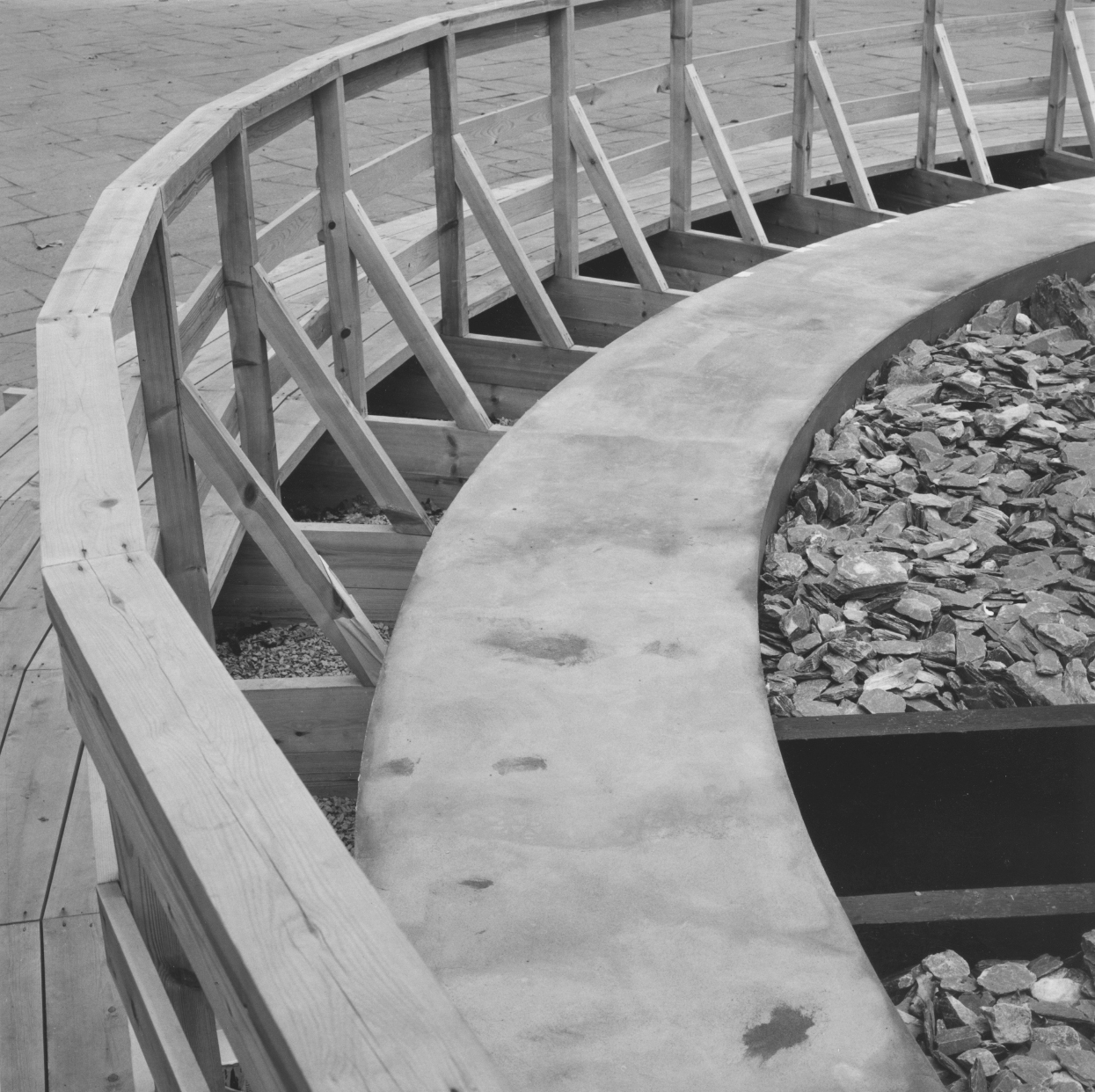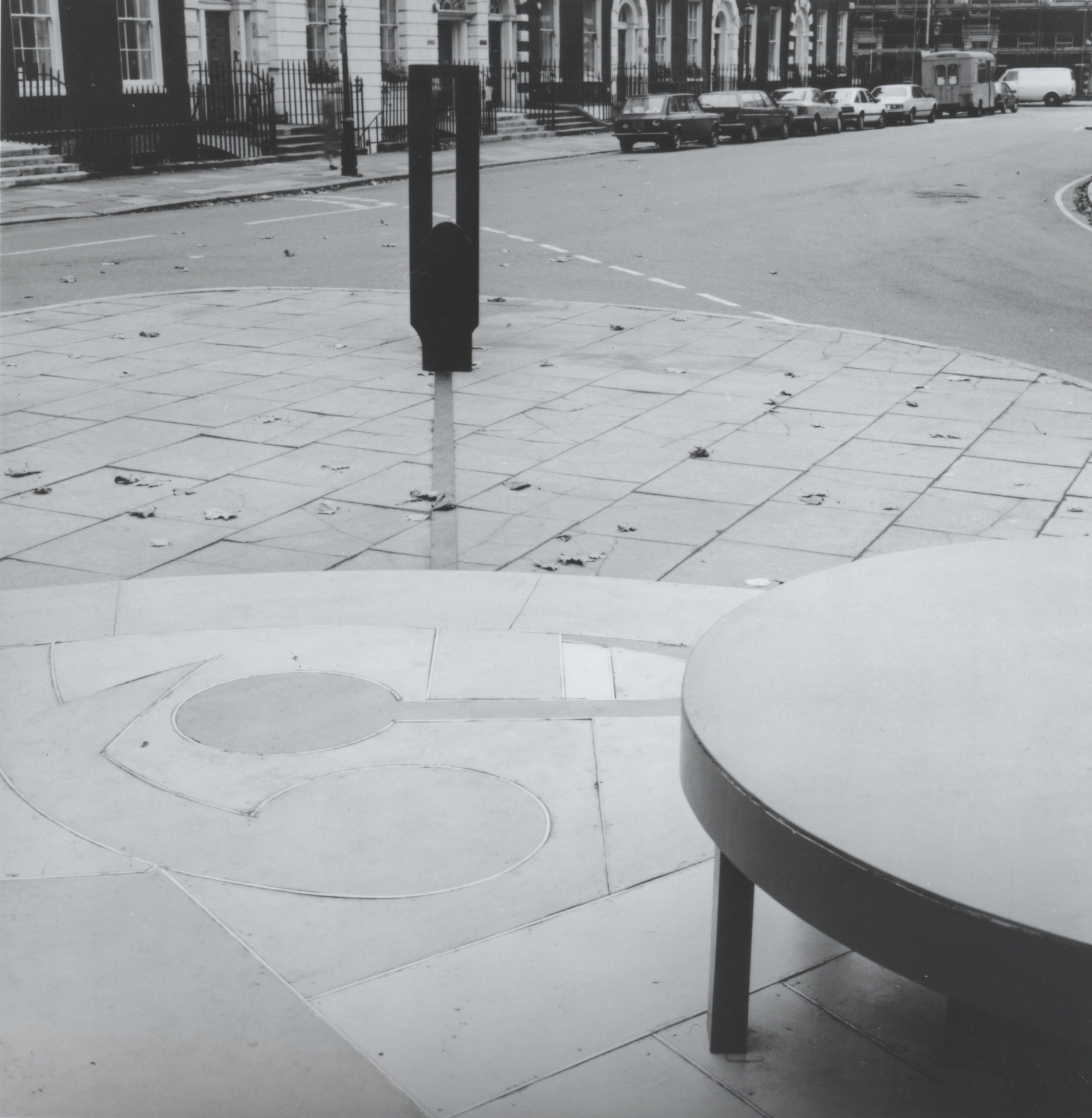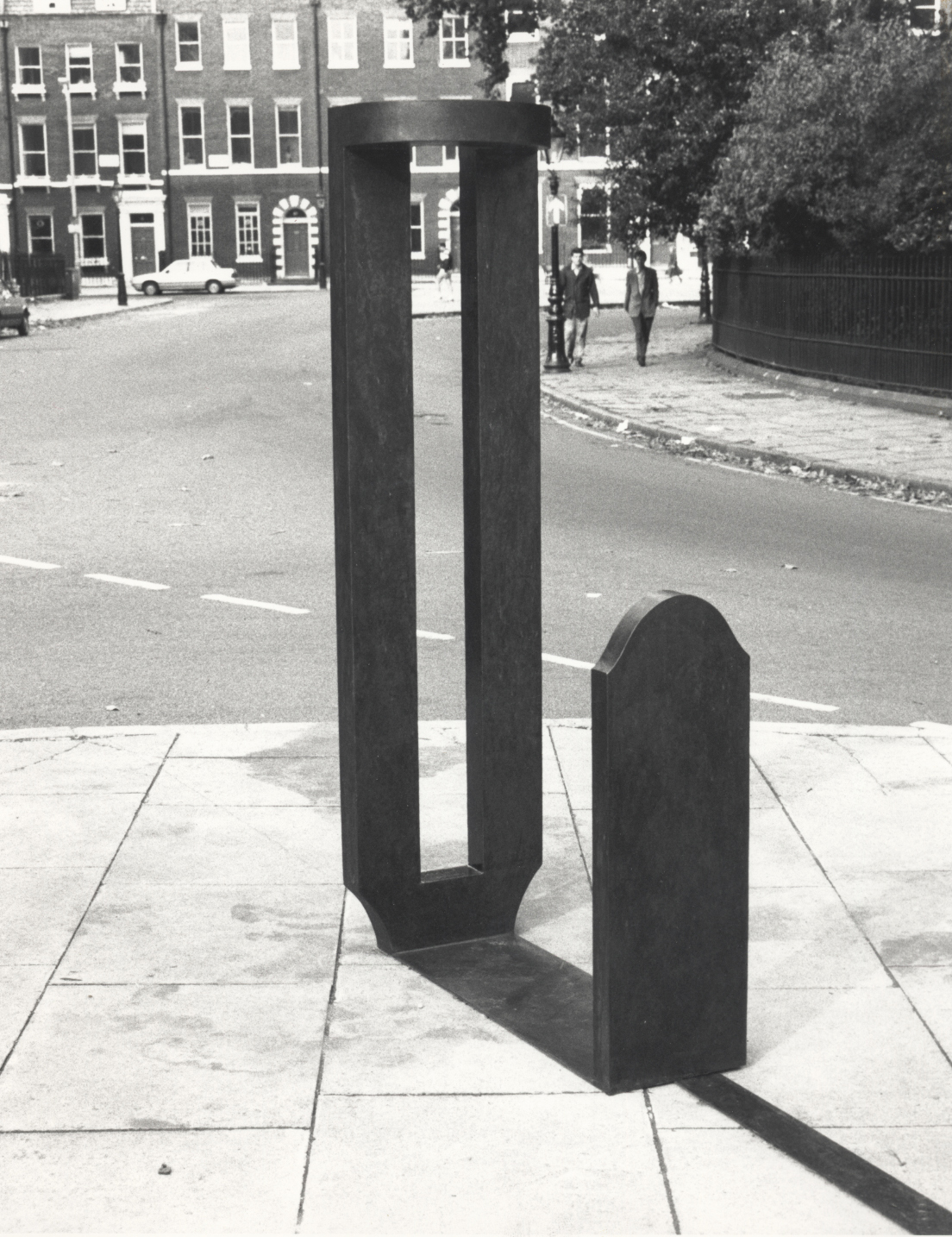This work was the start of an investigation of how to revisit hard surfaced spaces in front of buildings which are traditional locations for art. This typical venue was one that I had rejected from the start because of its physical and conceptual limitations. Originally intended as one of a series of pavilions in different cities, it was the only one built. The objective of the work is to make something that engages people, while having a minimal chance of physically interacting with the surroundings. It attempts to build a content into a structure in such a way that provokes reflection, and makes associations to aspects of site or city that might not otherwise have been considered.
The site is a concrete wedge, the kind of fragment that is left over by traffic engineers. It is located on a corner of Bedford Square which is lined by eighteenth (?) century town houses and has at its center a large oval green park space surrounded by fencing and accessible only to neighboring key holders. This was unfamiliar territory of hereditary housing and historically restricted access. The project developed around the idea of how we locate ourselves, after a visit to the Greenwich observatory and museum, which traces the history of the way time and space have been ordered over the past several hundred years.
The pavilion, which from a distance is like the directional rosette on a map, is located in the corner of the square. It is intended as a place for anyone to stop. Frequent or extended visits allow the ‘reading’ of the structure as its layers are progressively taken apart. A free-standing steel element adjacent to the main structure is like a sighting device but also insistently of human scale and able to take a person’s measure. A larger structure beyond it resembles parts of an oversize navigating device suggesting another means of measure.
A circular walkway which is clearly set on the surface of the ground surrounds and contains a smaller area of blue-grey stone with a slot cut through the center, marking magnetic north. The act of location is made palpable. The floor of the adjacent seating area is inlaid with painted wood segments outlined in brass that reconstruct an early map of the world which is itself an abstract and coded image.
The viewer moves from one part of the installation to another, through dense layers of information. S/he is asked to reflect on the variety of means of locating and mapping which have been juxtaposed with each other, and to examine the difference between a real experience of place and a mapped one.
This installation was at the Architectural Association in London.






